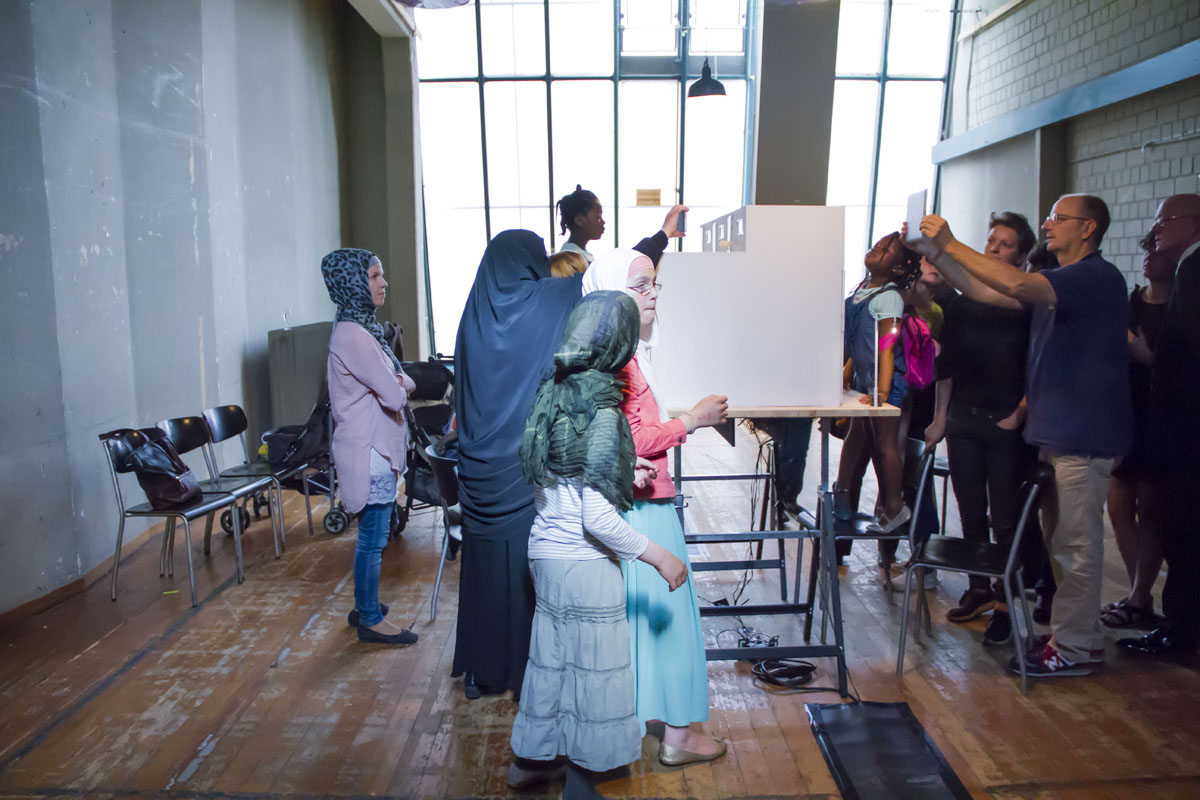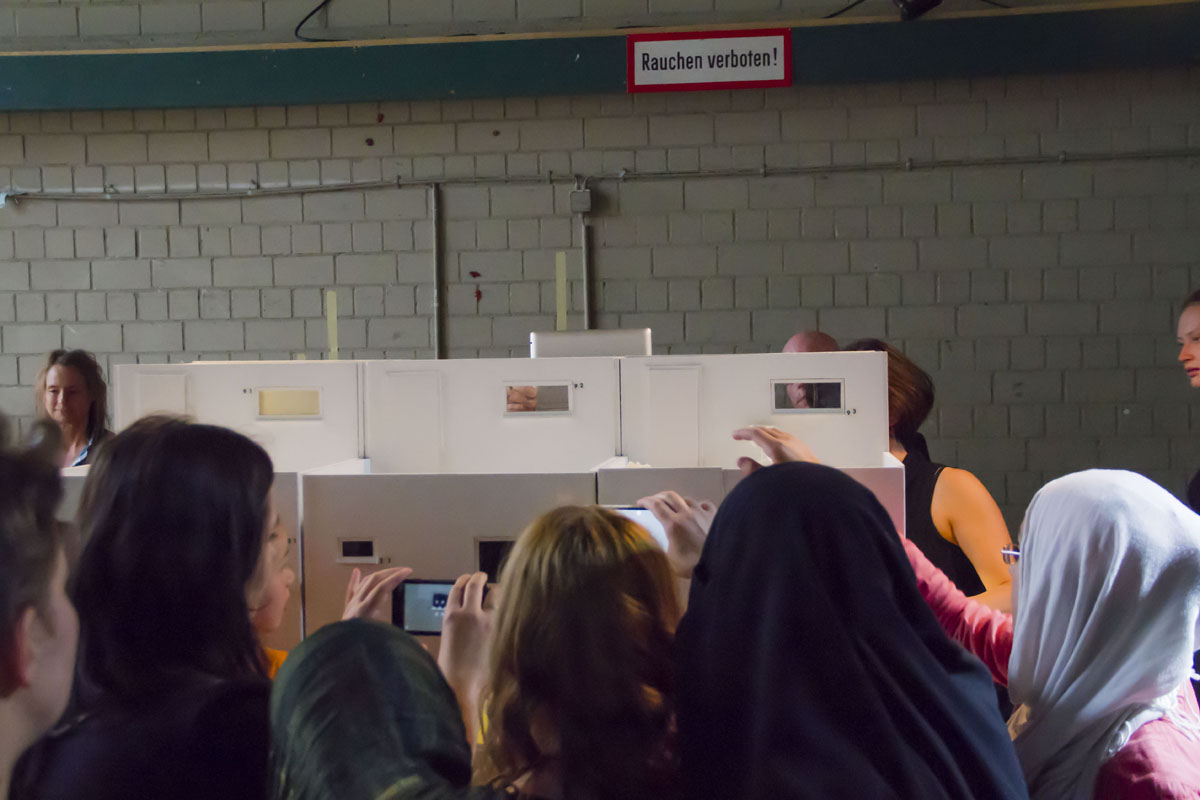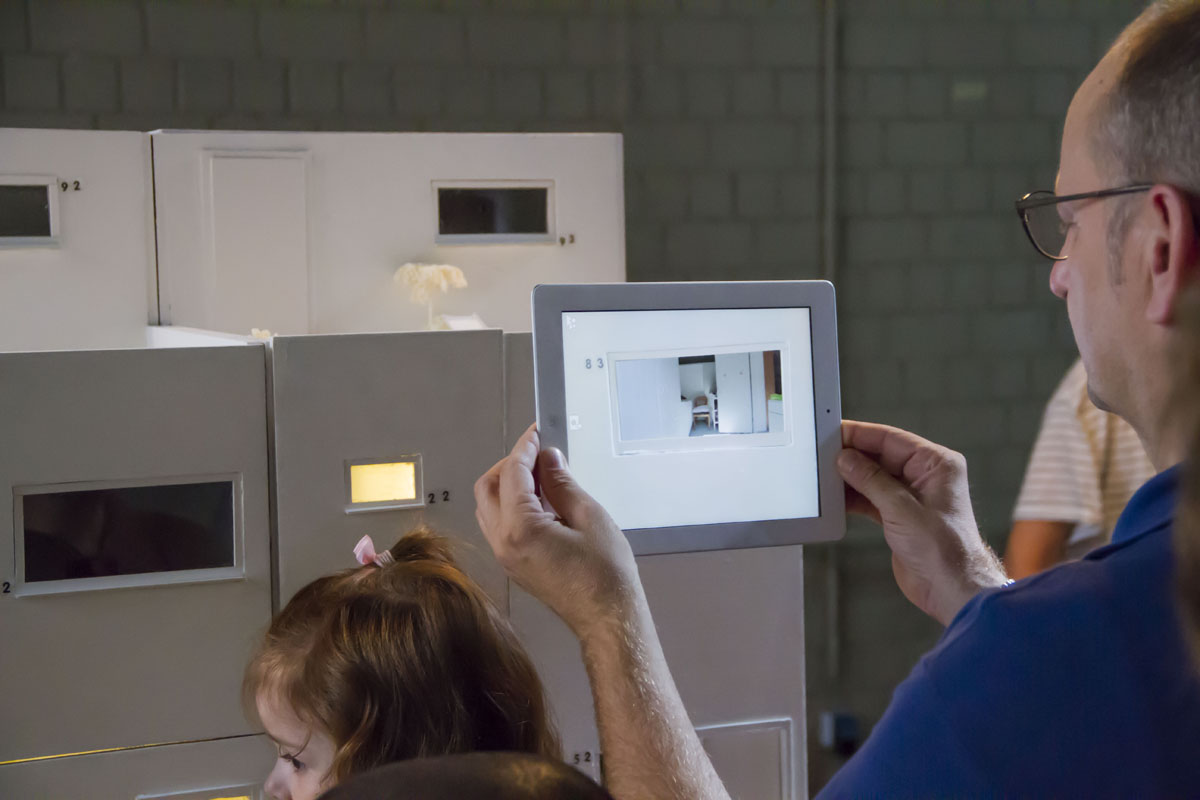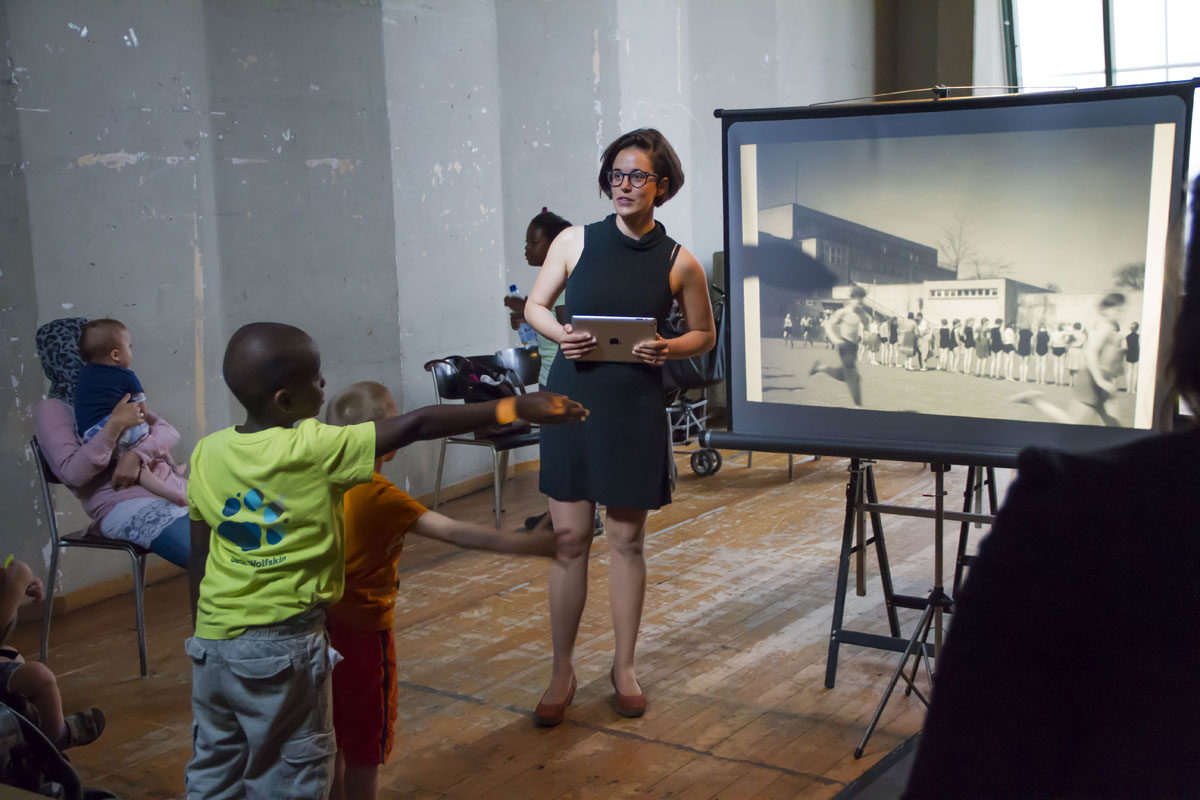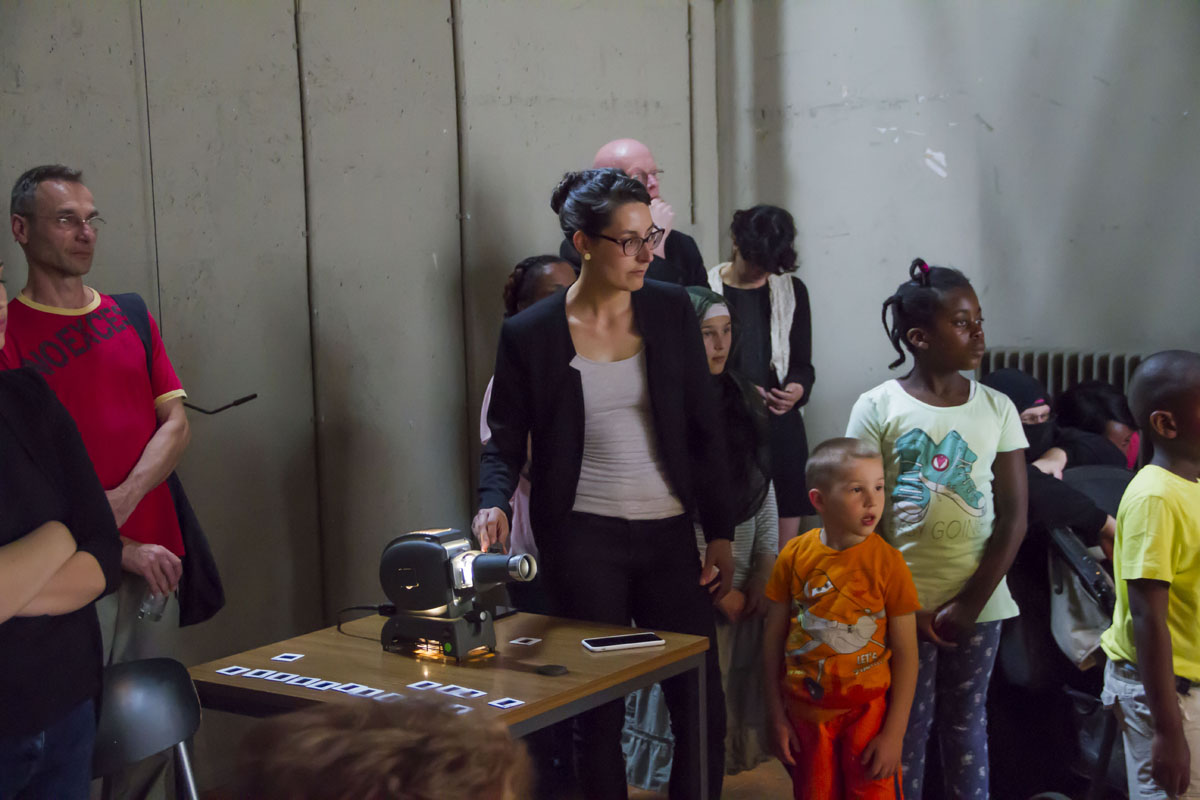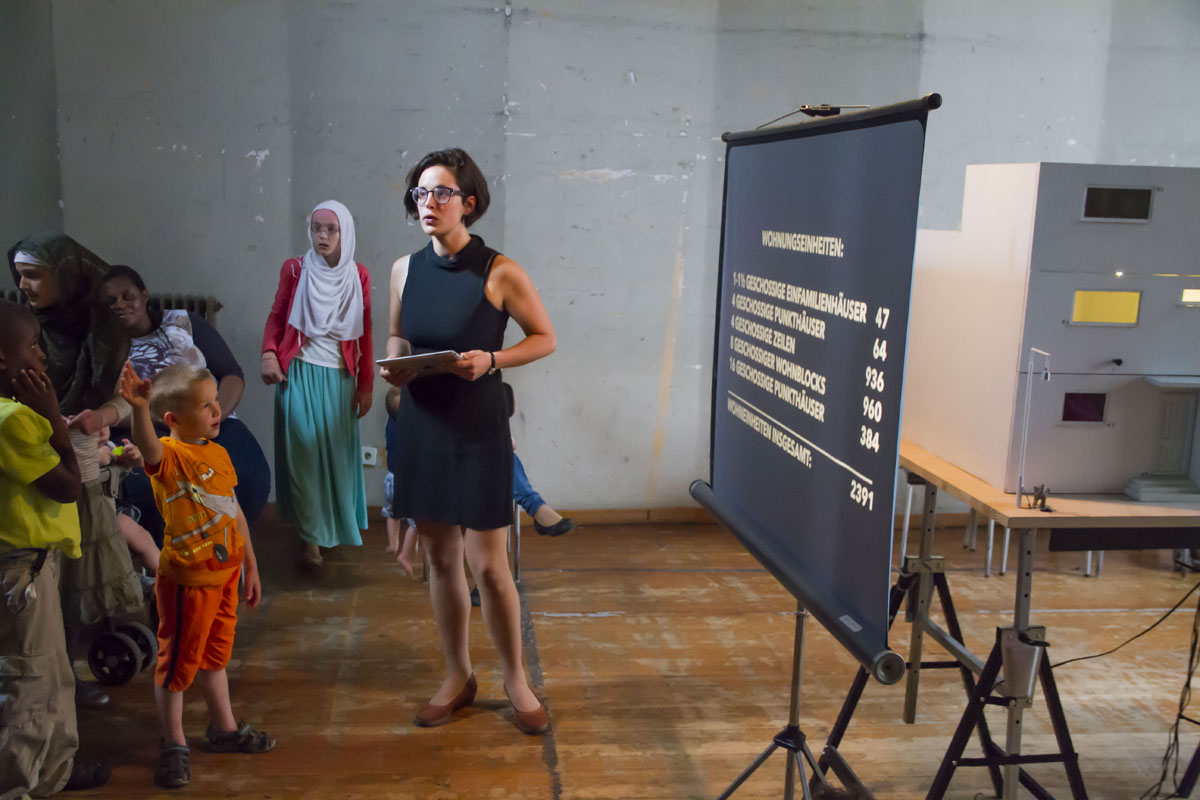THE NEW WIESBADEN
State Theatre Wiesbaden / Schelmengraben
2014, 2015, 2016
'It is part of my happiness not to be a homeowner', wrote Nietzsche in The Gay Science. One must add today: it is part of morality not to be at home with oneself."
Theodor W. Adorno
"We believe that the collective momentum in the lives of today's human beings, which is so strongly expressed in labour, sport and politics, must logically also be reflected in people's living cells."
Ernst May
Zwofadolei* is a two-family house with a two-wire line, which the Frankfurt Bauhaus architect and urban planner Ernst May designed and built in 1926 for illustrative purposes for the international architecture congress of 'Neues Bauen'. In this model house he saw the solution to the urgent European-wide questions of urban planning and the accommodation of people at the so-called Existenzminimum (subsistence level).
For May, the rationalization, standardization of living and simplification of work processes was a premise for social change and the foundation for a new era of community and humanity.
In 1963 he published his urban development plans for a "Neues Wiesbaden" (new Wiesbaden), according to which a large part of old buildings and art nouveau villas were to be demolished and replaced by modern apartment blocks and terraced houses. The project, which was prevented by citizens' initiatives, was then only implemented on the outskirts of Wiesbaden. Today, the buildings are managed by the Union for Hessian Housing and are used as social housing.
Eleonora Herder and her team visited the residents of Schelmengraben and talked with them about their everyday life and their living concepts - did May's plan work out? Does the 'new citizen of Wiesbaden' exist? Does he perhaps live quietly and unnoticed on the outskirts of this squiggly city?
The issue of this performance installation is to what extent people have been shaped by urban planning and architecture in the twentieth century.
To what extent are the discourses, history and politics of an era and a city reflected in its urban planning and what of it do people still contain within themselves today? Do the architectural settings of the past continue to have an effect on the inhabitants of today like a ghostly utopia?
A production of the Staatstheater Wiesbaden.
This production has received postgraduate funding from the Hessian Theater Academy.



"Augmented Reality" is a research approach in computer science that attempts to enable a description, over- and rewriting of "reality" through digital audiovisual media. In this process, an object, a building or a location is scanned with the camera and the filmed live image is superimposed with an animated image pre-produced for this location and this perspective, thus enabling an extension of one's own reality, but also an overlapping of times and places within one's own time period.
In a project with a theatrical focus, the augmented realities could become mini stages that hang like halos above the haptic reality. A narration could take place, which is created in a interaction of illusion and participation.
Can the medium be used for visual and acoustic subversion of places and people? Or does it simply enable a greater experience of something or someone who has been there? Do we use such a medium to track down ghosts? Or do we give a view of possible futures, perhaps a utopia?
All the places and objects of everyday use which we come into contact with are tainted with a utopia. Someone has at some point devised a more or less concrete or ideological definition of use for them. So they not only tell us about their actual history of use, but also about how or what we as consumers should actually be. This future of the past hangs invisibly and auratically above everything that surrounds us.
In our search for utopias of everyday life, we quickly came across "The New Frankfurt". This settlement policy, which was developed for Frankfurt in the 1920s by the architect and urban planner Ernst May. He did not only aim at an architectural development of the city, but also at a socialization of the society as a whole. Through the buildings and the associated structuring of private life, a new kind of human was to emerge, seeking a new era of unity and collectivity.
We wanted to use augmented reality to make implicit "layers" of our environment visible: To what extent are the discourses, history and politics of an era and a city reflected in its urban planning and what of it do people still contain within themselves today? Do the architectural settings of the past have the effect of a ghostly utopia on the inhabitants of today? We wanted to approach this question empirically by visiting the current residents of Ernst May Houses in order to interview them about their living situation and to document the movements in their apartments on film.
If augmented reality has so far mainly served to enrich reality with utopian/fictional elements, then from now on we want to enrich utopia with reality. As if today's reality were a kind of anticipation, a vision of the future that hovered over the utopia of the past.
For us, an architectural model seemed to be the manifestation of immaculate utopia in a haptic reality.
(Eleonora Herder)
Concept and management: Eleonora Herder
Dramaturgy: Anna Schewelew
Stage design: Sabine Born
Stage design assistance: Lucia Bushart
Performance: Eleonora Herder, Maria Isabel Hagen & Sabine Born
Video design: Alla Poppersoni
Interface: Zentralwerkstatt / Fabian Offert
Sound design: Jan Mech
28.06.2015 from 12:00h as part of the "Hessische Theatertage" at the Staatstheater Wiesbaden.
13.10.2015 from 18:00h Naxos cinema. "Cinema at the theatre"
11.11.2016 - 18.11.2016 as permanent installation in the city hall of Wiesbaden. As part of "Wir in Wiesbaden."
19.11.2016 - 25.11.206 as permanent installation in the district centre Schelmengraben, in Wiesbaden.
Teaser Video:
Documentation performance:
Documentation permanent installation:
„Die Frankfurt Künstlerin Eleonora Herder, die Bühnenbildnerin Sabine Born, die Prgrammierin Alla Poppersoni und ein Team von Sozialarbeitern der Kulturinitiative Schelmengraben Bunt haben diese Ausstellung die bereits in anderen Städten zu sehen war, auf lokale Gegebenheiten angepasst. Der Effekt ist verblüffend, doch sollte man Zeit und Konzentration mitbringen.“
(Anja Baumgart Pietsch: „Alltag in Ernst Mays Hochhaus“, Wiesbadener Kurier, 16.11.2016)
“Die meisten Wiesbadener übrigens dürften auch nicht wissen, was eine Zwofadolei ist. Der berühmte Architekt Ernst May hatte das „Zweifamilienhaus mit Doppelleitung“, also eine „Zwofadolei“, in den zwanziger Jahren entworfen. Dass es sie nicht nur im „Neuen Frankfurt“ gibt, sondern auch in Wiesbaden, weit weg vom historischen Zentrum, am Schelmengraben in Dotzheim, hat Eleonora Herder mit Maria Isabel Hagen und Sabine Born zu einer Performance bewegt, mit der sie Bewohner des heutigen Schelmengrabens, die Thesen Mays und das Publikum vor einem hübschen Doppelhausmodell zusammenbringen.“
(Eva Maria Magel: „Stücke auf dem Silbertablett. Die Hessischen Theatertage zeigen, was hiesige Bühnen können“, Frankfurter Allgemeine Zeitung, 20. Juni 2015)


